How to Use This Curriculum
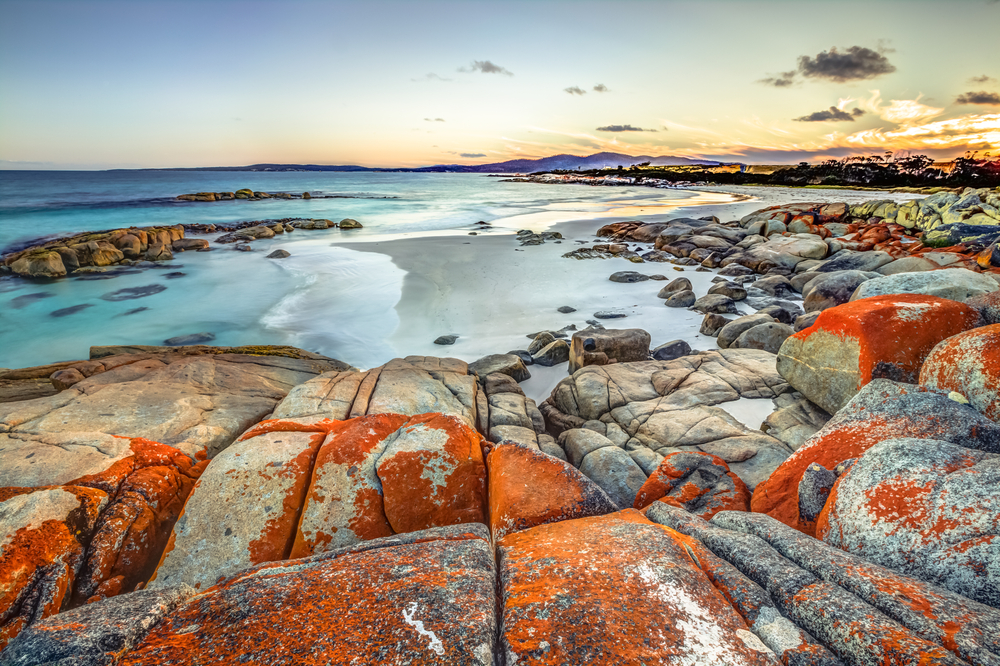
First rule: There are no rules. These resources are completely free and at your disposal. Use as much, or as little, as you want. Study casually, or work to create a portfolio of academic work that will blow the socks off of the educational establishment.
Feel free to adapt the materials for your own purposes. We expect families, business people, backpackers, college students, high school kids, middle aged vacationers, and retirees who are on a late life adventure to take these materials and run with them. We’d be very happy for teachers or travel group leaders to add these materials to their study abroad packets as well.
The nature of open source is collaboration, so please feel free to contribute when you become aware of resources we haven’t listed, or you have project ideas that we haven’t developed. Send us your work and inspire others to reach higher and deeper as they travel!
Our goal with this project is to inspire adventure and further education through experiential learning around the world. Please send us a note and let us know how you used these resources!
Buffet Style Learning
Does the menu look overwhelming? Looking for a formula to use as a skeleton for your studies in Guatemala?
Choose:
- Two books
- Two films
- Three articles
- One Problem & Solution or Project Option
- One Cultural Assignment
Table of Contents
- Books
- Films
- Articles
- Organizations
- Academic Assignments
- Problems & Solutions
- Cultural Assignments
- Create Your Own Coursework
Book Recommendations

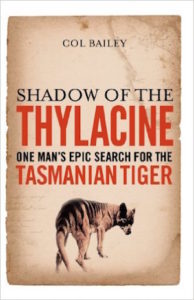 Shadow of a Thylacine – One man’s epic search for the Tasmanian Tiger
Shadow of a Thylacine – One man’s epic search for the Tasmanian Tiger
by Col Bailey
Shadow of the Thylacine is the haunting story of Col Bailey’s relentless search for the Tasmanian tiger. His extensive journey commenced unexpectedly in 1967 when he sighted a Tasmanian tiger along the shores of the Coorong in South Australia. Then, in 1993, a chance encounter with an elderly bushman unlocked a wealth of previously untold information that led Col into the vast and untrodden wilderness of Tasmania’s Weld Valley. Now the truth of this significant discovery can be revealed in this tell-all book about an animal the experts claim is long extinct and couldn’t possibly still exist.
This is a thrilling Australian story.
Deep South – Stories from Tasmania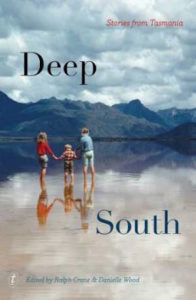
by Ralph Crane & Danielle Wood
A collection of twenty-four short stories that celebrate the history, culture and creativity of Tasmania.
This handsome collection, the first to bring together the finest stories about Tasmania, includes works by notable early Australian writers, such as Marcus Clarke and Tasma; internationally renowned practitioners, like Hal Porter, Carmel Bird and Nicholas Shakespeare; and a range of newer voices, from Danielle Wood and Rohan Wilson to Rachael Treasure.
These twenty-four superb stories showcase the island’s colonial past, its darkness and humour, the unique beauty and savagery of its landscape.
A must-read for enthusiasts of Australian literature, Deep South comes with a critical introduction from the editors and biographical sketches of the contributors:
Pedder Dreaming – Olegas Truchanas and a Lost Tasmanian Wilderness 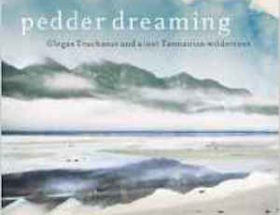
by Natasha Cica
In 1972, the pristine Lake Pedder in Tasmania’s untamed south-west was flooded to build a dam. Wilderness photographer Olegas Truchanas, who had spent years campaigning passionately to save the magnificent freshwater lake, had lost his battle. But the campaign, the first of its kind in Australia, paved the way for later conservation successes, and turned Truchanas into a Tasmanian legend.
Pedder dreaming quietly evokes the man, the time and the place. Truchanas, a post-war Lithuanian émigré, was a stalwart adventurer, loving family man, activist, thinker, survivor and artist. Told through the recollections of those who were closest to him, Truchanas emerges, as does his influence on early conservation in Tasmania, and the small group of landscape painters, the Sunday Group, who admired his passion for his wondrous landscape.
Stunningly illustrated with original Truchanas photographs from the 1950s through to the 1970s, and with artwork from the Sunday Group,pedder dreamingcaptures the brutality, raw beauty and vulnerability of the Tasmanian wilderness and the legacy of one man who had the vision to fight for it.
Van Dieman’s Land – An Aboriginial History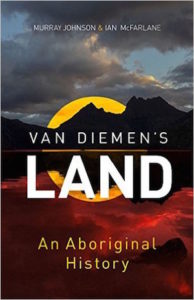
by Murray Johnson & Ian McFarlane
The history of Aborigines in Van Diemen’s Land is long. The first Tasmanians lived in isolation for as many as 300 generations after the flooding of Bass Strait. Their struggle against almost insurmountable odds is one worthy of respect and admiration, not to mention serious attention. This broad-ranging book is a comprehensive and critical account of that epic survival up to the present day.
Starting from antiquity, the book examines the devastating arrival of Europeans and subsequent colonization, warfare and exile. It emphasizes the regionalism and separateness, a consistent feature of Aboriginal life since time immemorial that has led to the distinct identities we see in the present, including the unique place of the islanders of Bass Strait.
Carefully researched, using the findings of archaeologists and extensive documentary evidence, some only recently uncovered, this important book fills a long-time gap in Tasmanian history.
Tasmanain Aborigines – A History since 1803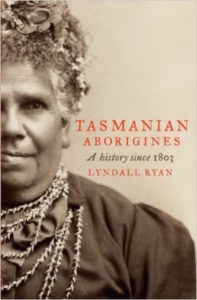
by Lyndall Ryan
The story of the Aboriginal people of Tasmania, from the arrival of the first whites to the present. While it contains much that is tragic, it is also a story of resilience and survival in the face of great odds.
‘Lyndall Ryan’s new account of the extraordinary and dramatic story of the Tasmanian Aborigines is told with passion and eloquence. It is a book that will inform and move anyone with an interest in Australian history.’ – Professor Henry Reynolds, University of Tasmania
‘A powerful and insightful historical account about a unique island and its First peoples, their dispossession and their struggle for survival and cultural birth right/heritage that reaches from the deep past to the present day.’ – Patsy Cameron, Tasmanian Aboriginal author, cultural geographer and cultural practitioner
Tasmanian Aborigines were driven off their land so white settlers could produce fine wool for the English textile mills. By the time Truganini died in 1876, they were considered to be extinct. Yet like so many other claims about them, this was wrong.
Far from disappearing, the Tasmanian Aborigines actively resisted settler colonialism from the outset and have consistently campaigned for their rights and recognition as a distinct people through to the present.
Lyndall Ryan tells the story of the Aboriginal people of Tasmania, from before the arrival of the first whites to current political agendas. Tasmania has been the cradle of race relations in Australia, and their struggle for a place in their own country offers insights into the experiences of Aboriginal people nation-wide.
Into the Woods – The Battle for Tasmania’s Forests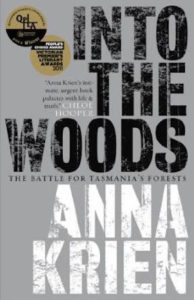
by Anne Krien
For many years, the Tasmanian wilderness has been the site of a fierce struggle. At stake is the future of old-growth forests. Loggers and police face off with protesters deep in the forest, while savage political games are played in the courts and parliaments. In Into the Woods, Anna Krien, armed with a notebook, a sleeping bag and a rusty sedan, ventures behind the battlelines to see what it is like to risk everything for a cause. She speaks to ferals and premiers, sawmillers and whistle-blowers. She investigates personalities and convictions, methods and motives. This is a book about a company that wanted its way and the resistance that eventually forced it to change. Into the Woods is intimate, intrepid reporting by a fearless new voice.
In Tasmania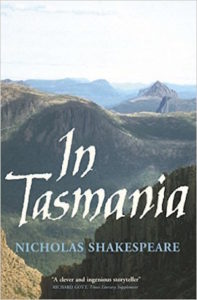
by Nicholas Shakespeare
A brilliant account of 200 years of Tasmanian history and an acclaimed writer’s discovery of his secret connection with that island and its past.
In Tasmania on holiday, novelist and Chatwin biographer Nicholas Shakespeare discovered a house on a 9-mile beach and instantly decided this was where he wanted to live. He didn’t know then that his ancestor was the corrupt and colourful Anthony Fenn Kemp, now known as ‘the Father of Tasmania’, or that he would find relatives living on the island.
Shakespeare interweaves his personal journey into a new-found paradise with a brilliant account of the two turbulent centuries of Tasmania’s history in this fascinating and timely book. ‘A delightful book. Nicholas Shakespeare is a fine story teller and here he unveils for us a compendium of fascinating Tasmanian characters past and present, from bankrupt squires to convict cannibals, from love struck romantics to the captivating monstrous Anthony Fenn Kemp, the Flashman of early colonial Australia. From all these lives Shakespeare builds up a rich and powerful portrait of this intriguing land, his adopted home.’ – Matthew Kneale
Film Recommendations
The Hunter
The Hunter is the story of Martin, a skilled and ruthless mercenary sent into the Tasmanian wilderness on a hunt for a tiger believed to be extinct. Hired by an anonymous company that wants the tiger’s genetic material, Martin arrives in Tasmania posing as a scientist. He proceeds to set up base camp at a broken-down farmhouse, where he stays with a family whose father has gone missing. Usually a loner, Martin becomes increasingly close to the family; however, as his attachment to the family grows, Martin is led down a path of unforeseen dangers, complicating his deadly mission
Vandeiman
The true story of Alexander Pearce, Australia’s most notorious convict. In 1822, Pearce and seven fellow convicts escaped from Macquarie Harbour, a place of ultra banishment and punishment, only to find a world less forgiving.. the Australian wilderness. Abandon all hope you who enter.
Tasmania – Paradise at the End of the World – The Secrets of Nature
It was only two hundred years ago that Tasmania was a British colony known as Van Diemens Land — and so remote that its only use was as a penal settlement for the most hardened criminals. Times have definitely changed, yet that remote untamed island of history is never far away.
Today Hobart, the capital of Tasmania, is a bustling modern city and busy port. Mount Wellington rises straight out of the city to more than 1200 metres. It’s possible– in just a little over half an hour – to drive from a city centre restaurant to a wilderness where you could freeze to death. Even in summer snow can fall here. To the people of Hobart, this place is simply The Mountain – a finger of a vast and trackless wilderness pointing right at the heart of the city — so it’s not surprising that Tasmania’s wild heritage plays a central role in the lives of the island’s human inhabitants.
Beaconsfield
The true story of Brant Webb and Todd Russell, who were trapped nearly a kilometer below the surface of the Beaconsfield Mine.
The Return of the Tasmanian Tiger
The thylacine was the largest known carnivorous marsupial of modern times. It is commonly known as the Tasmanian tiger (because of its striped lower back) or the Tasmanian wolf. Native to continental Australia, Tasmania and New Guinea, it is thought to have become extinct in the 20th century. It was the last extant member of its family, Thylacinidae; specimens of other members of the family have been found in the fossil record dating back to the early Miocene.
The thylacine had become extremely rare or extinct on the Australian mainland before British settlement of the continent, but it survived on the island of Tasmania along with several other endemic species, including the Tasmanian devil. Intensive hunting encouraged by bounties is generally blamed for its extinction, but other contributing factors may have been disease, the introduction of dogs, and human encroachment into its habitat. Despite its official classification as extinct, sightings are still reported, though none have been conclusively proven.
Saving the Franklin
On December 14th 1982, the Tasmanian Wilderness Society began an on sight blockade of construction work on a dam to flood the Franklin River in south west Tasmania. This action was the culmination of 7 years protest against the proposed dam.
The Lake Pedder Conflict
The Lake Pedder Conflict video gives an overview of the Lake Pedder conflict that occurred in Tasmania. This conflict was the precursor to the infamous Franklin River conflict and also preempted the formation of famous Australian organisations, The Wilderness Society and The Greens political party.
The Franklin River Blockade 1983, Tasmania
On December 14th 1982, the Tasmanian Wilderness Society began an onsight blockade of construction work on a dam to flood the Franklin River in south west Tasmania. This action was the culmination of 7 years protest against the proposed dam. The Franklin River Blockade 1983, Tasmania tells the story in two parts.
Article Recommendations
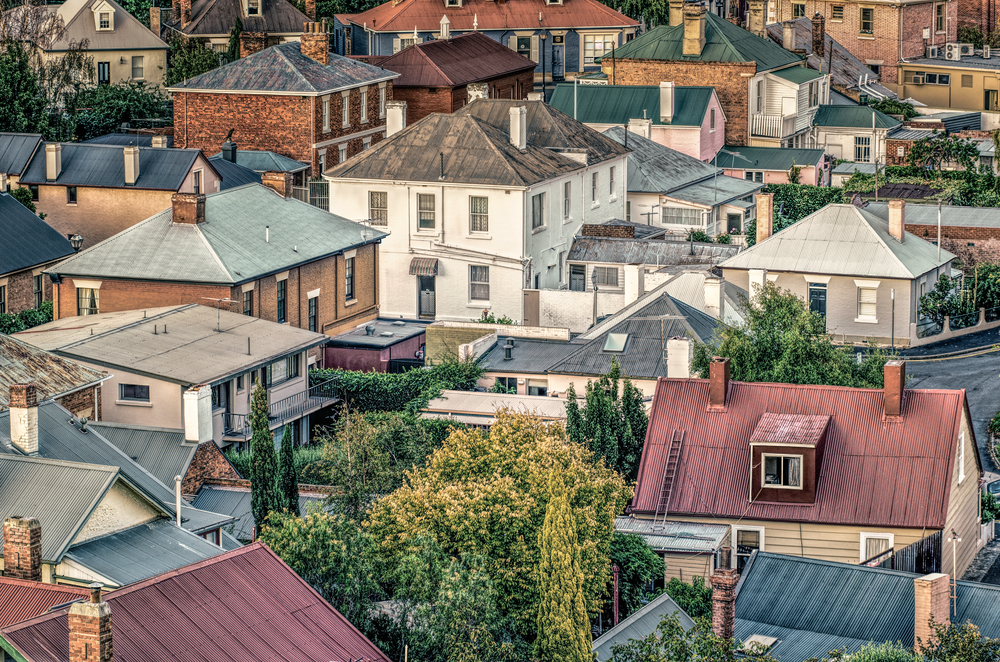
Brand Tasmania: Under Threat Against Bio Security Changes: PIBAA
Palmer Proposes Tax Free Tasmania
Saving Devils in a Single Disease Free Corner of Tasmania
Tourism: Tasmania’s Key Growth Industry
Australia Covered Up UN Climate Change Fears for Tasmanian Wilderness and Kakadu
The Lost Tribe – Guardian
Project Options
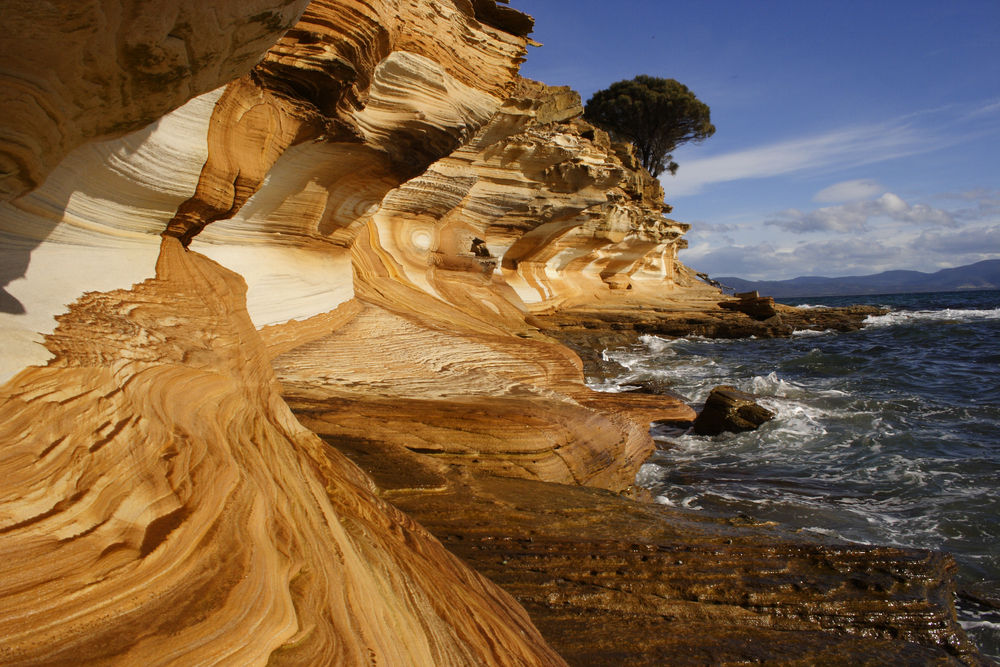
Pre-Colonial History
Who inhabited Tasmania before the arrival of the explorers? Explore the history of Aboriginal Tasmanians.
Visit the Tasmanian Museum and Art Gallery in Hobart
– How was this culture unique to the mainland aborigines?
– What was life before British Occupation?
– What was life like after British Occupation of Tasmania?
– The “Black War” the first modern Genocide?
– Aboriginal people today in Tasmania
Begin to expand your understanding of Aboriginal Cultural Heritage and Aboriginal Tasmanians.
Convict History
Tasmania’s convict history tells a tale of crime, punishment, hardship and survival in some of the harshest, yet most beautiful places on earth. Over 70,000 men, women and children were transported from their home to Van Diemens Land in the early 1800s and many of the places and features built during that time are still standing today.
Five of Australia’s eleven UNESCO World Heritage-listed convict sites can be found in Tasmania.
The Port Arthur Historic Site is Australia’s most famous penal settlement, built on picturesque Mason Cove and surrounded by dense forest while the nearby Coal Mines Historic Site was Tasmania’s first mine, operated by over 500 convicts. Today, mining ruins and relics can be explored among the surrounding bushland.
In Hobart, the Cascades Female Factory tells the stories of the thousands of female convicts transport to Tasmania and on Maria Island off Tasmania’s east coast, Darlington Probation Station consists of buildings dating back as far as the 1820s set in a beautiful natural environment.
And in the north, the stately Brickendon Convict Village and Woolmers Estate are extraordinary testaments to the hard work of convicts assigned to private landowners.
Other convict highlights around the state include Sarah Island in Macquarie Harbour, the convict built bridge in Richmond and the recently constructed memorial convict trail in Campbell Town.
As well as these, there are lots more convict sites across the state, including roads, bridges and buildings and carvings such as The Wall in the Wilderness near Lake St Clair – in fact, a visit to just about any early town will reveal the hard labour and skilled craftsmanship of Tasmania’s convicts.
Visit as many convict sties as possible. Study the way of life and all the hurdles they faced and overcame.
How does this history impact Tasmania today?
Hydro Tasmania and the Forestry and Mining Industry
Hydro Electric Commission – the 1940s and 1950s there had been a hydro-industrialisation initiative embodied in the state by Hydro Tasmania. These all have had varying fortunes over the last century and more, involved in ebbs and flows of population moving in and away dependent upon the specific requirements of the dominant industries of the time.
Processed metals – Production of metals brings more than 1.3 billion Australian dollars into Tasmania every year. The largest processors of minerals are Nyrstar, the current owners of a zinc smelter on the Derwent River in Hobart, and aluminium producers on the Tamar River at Bell Bay in the north.
Forestry – From the early days of first European settlement in 1803 a succession of products have been produced from Tasmanian forests. Initially these included shingles, split posts, rails, palings and pit hewn lumber. In the latter half of the past century water and steam powered sawmills became established and in the current century sawmill technology has become increasingly sophisticated. The pulp and paper industry which developed in the late 1930s has experienced turbulent times. Finally, the controversial wood chip export industry commenced in 1972.
Examine the impact of the Hydro, mining and forestry around Tasmania. Visit the Styx River Reserve and The Florentine Valley the site of the longest environmental protest to protect the now World Heritage areas.
What have been the implications, positive and negative, of the impacts on Tasmania? Are these industries still improving the economy? Analyze the costs and benefits.
Tasmania’s Natural Resources
The Tasmanian Wilderness is one of the largest conservation reserves in Australia. At approximately 1.6 million hectares it is one of the three largest temperate wilderness areas remaining in the Southern Hemisphere.
The region is home to some of the deepest and longest caves in Australia. It is renowned for its diversity of flora, and some of the longest lived trees and tallest flowering plants in the world grow in the area. The Tasmanian Wilderness is a stronghold for several animals that are either extinct or threatened on mainland Australia.
The Tasmanian Wilderness contains hundreds of archaeological sites, including many cave sites dating from the late Pleistocene and early Holocene epochs. The earliest cave sites are evidence of what are currently understood to be the southern-most people in the world during the last glacial period, who were part of the forefront of the first expansion of modern humans across the globe.
The Tasmanian Wilderness was inscribed on the World Heritage List in 1982 and extended in 1989, June 2010, June 2012 and again in June 2013.
The Tasmanian Wilderness was one of 15 World Heritage places included in the National Heritage List on 21 May 2007.
The rugged and spectacular landscapes of the Tasmanian Wilderness contain rocks from almost every geological period, the oldest being formed about 1,100 million years ago during the Precambrian period. Some of the deepest and longest caves in Australia and other spectacular karst landscapes are found here.
Plant Diversity
Due to the diversity of its vegetation the region is recognised as an International Centre for Plant Diversity by the International Union for Conservation of Nature (IUCN). The highly varied flora, ranging from open and closed forests through to buttongrass moorland and alpine communities, occurs in a unique mosaic of Antarctic and Australian elements. The Antarctic element consists of species descended from those present on the supercontinent Gondwana.
Some of the longest lived trees in the world such as Huon pines (Lagarostrobos) and other native conifers grow in the area. Nothofagus is an ancient plant genus of Gondwanan ancestry, represented in the area by N. cunninghamii and Australia’s only winter deciduous tree, N. gunnii. Some of the tallest flowering plants in the world, Eucalyptus regnans, grow here. The area contains approximately 264, or 65 per cent, of Tasmania’s endemic vascular plant species.
Native Fauna
The fauna is also of global significance because it includes an unusually high proportion of endemic species and relic groups of ancient lineage. The diverse topography, geology, soils and vegetation, in association with harsh and variable climatic conditions, combine to create a wide array of animal habitats. Many groups of marsupials and burrowing freshwater crayfish have survived as relics of the Gondwanan fauna.
The insularity of Tasmania, and of the Tasmanian Wilderness in particular, has contributed to its uniqueness. The area remains a stronghold for several animals such as the Tasmanian devil, Tasmanian pademelon, eastern quoll and ground parrot that are either extinct or threatened on mainland Australia. The Tasmanian Wilderness World Heritage Area is home to the last wild breeding population of the critically endangered Orange-bellied Parrot. There may be less than 50 Orange-bellied Parrots in the wild currently.
Fauna endemic to the region include the moss froglet, Pedra Branca skink, Pedder galaxias and invertebrate groups with a high proportion of species entirely or primarily restricted to the area, such as freshwater crayfish, mountain shrimps, stoneflies, caddisflies, landhoppers and harvestmen.
Examine the factors that have threatened Tasmania’s natural resources is the past and what continues to threatens Tasmania natural places.
Learn more about the fight for Tasmania’s natural and wild places:
- The first environmental battle and the fight to save Lake Pedder
- The formation of the Wilderness Society and The Greens Party
- Florentine and Franklin protests
Study an aspect of the Tasmanian Wilderness that interests you. Examine the natural wealth of the region and produce a project based on what you are learning.
Produce an article, or a video project that focuses on preservation or the uniqueness of some aspect of the site. Education is the first step to understanding, tell one of the many stories to be uncovered and share it with the world.
Tourism Industry
Red Tape
Examine the red tape and attempts at its reduction. How has this impacted small business in Tasmania.
Decline of the forestry and mining industries and the new future of Tasmania
Examine the pros and cons of the investments from Asia, especially Chinese investment impacts.
Tourism and transforming communities with eco-sustainable tourism
As you travel look for ways that communities are transforming themselves with eco-sustainable tourism. Interview several people involved in this industry and ask questions related to industry growth, community and environmental impact, as well as the economic future of the county.
Profiles Of ….
Conduct a series of at least five interviews within a country.
The point of the exercise would be to get a well rounded view of what it is like to live in Tasmania from a variety of ages, incomes, employments and experiences. This could be conducted as video, or as text and the student would be expected to do an analysis of the experience/information.
People you might profile:
Farmers
Teachers
Restaurant owners/workers
Church officials
Government officials
Doctors or Nurses
Street vendors
Children
Parents
Drivers
Artists or Musicians
Laborers
NGO workers
Long term expats
Problems & Solutions
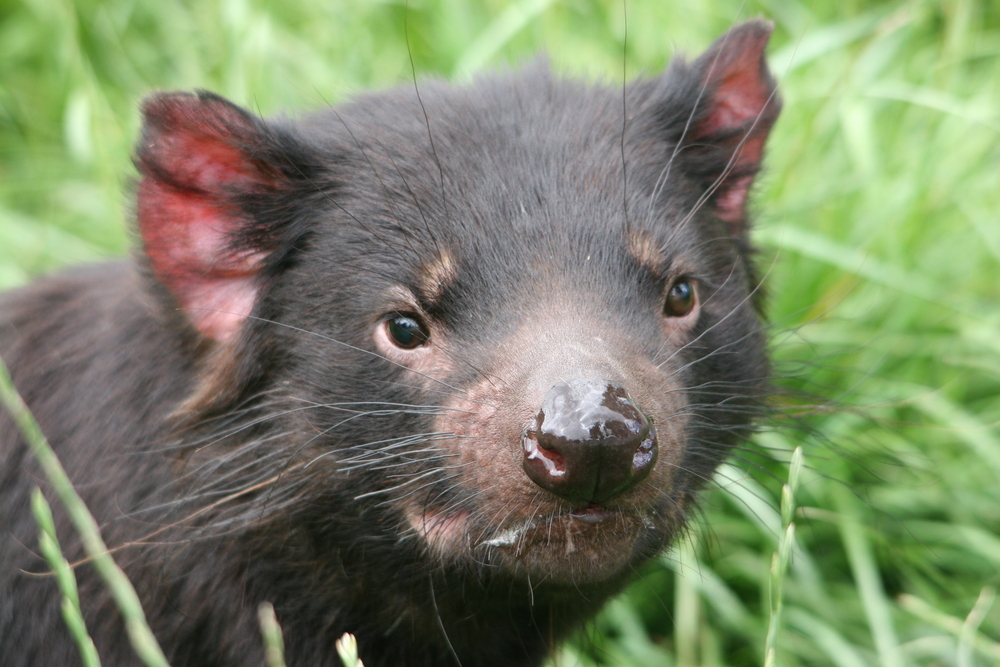
Employment in Tasmania
There had been a decline in manufacturing during the 1990s, leading to a drain of some of the island’s trained and experienced working population to mainland Australia. The major urban centres such as Melbourne and Sydney are popular destinations.
Explore the crisis of youth unemployment. Tasmania has the highest youth unemployment rate in Australia ranging between 15-21% through some regions.
Read Big Thought & a Small Island, in The Griffith Review, as a starting point for your research.
Unique Populations & Threats
Tasmanian Devil: Facial Tumor Disease
Facial Tumor Disease represents a crisis for the famous Tasmanian Devil. Research what causes it and the lengths taken to save the Tasmanian Devil populations. Perhaps visit a zoo, or a conservation site to interview those most intimately involved with the efforts. Why does this work matteR?
Platypus: Fungal Disease – Mucormycosis
The platypus is an animal unique in the world and unique to this continent. Platypus Fungal Disease is a serious health crisis for the creatures. How does this affect the Tasmania playtupus populations and their survival? What is being done to stem the growth of the disease? Interview the conservationists involved in the work and examine the strategies being employed.
Anti Protest Laws
Tasmania has passed laws regulating protest freedoms. Examine the consequences of this legislation. Visit Florentine Camp and read about the longest standing blockade. How will this impact the protection of our wild places? Compare and contrast to the protest legislation elsewhere in the first world.
Cultural Assignment Options
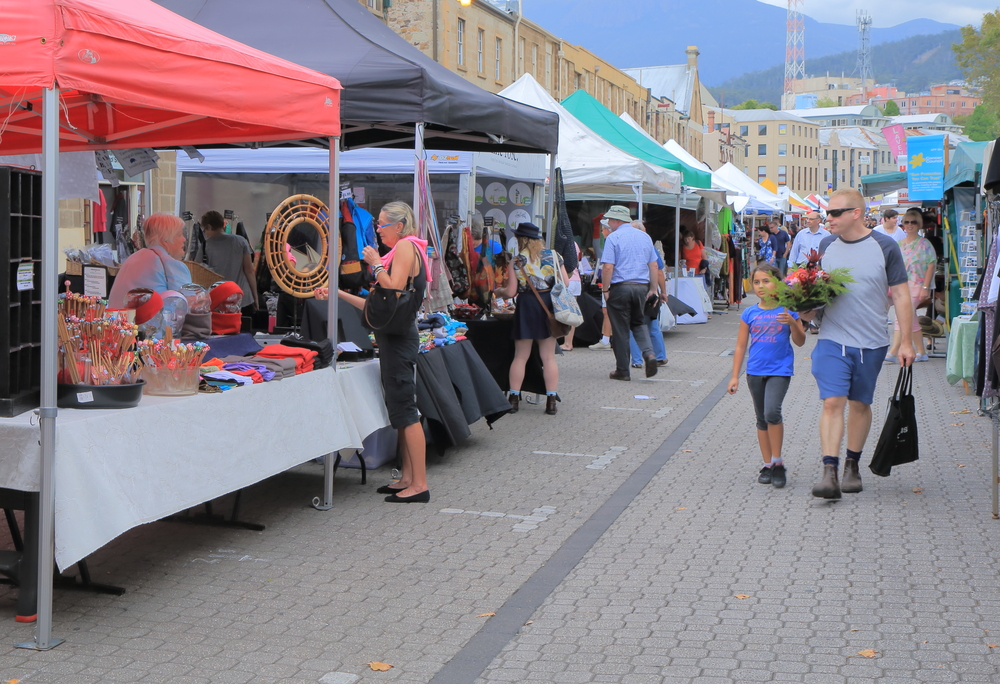
This is a list of ideas for projects that you can take and run with. In order to get credit for these projects there needs to be an “output” of some measurable sort. Common options would include a video project, a blog post, an essay, a published piece of work, or a certificate of some sort documenting the experience (in the case of a class taken).
Sample the Foods
Document the experience of trying at least five brand new foods during your stay (a fun photo essay? or video?) Take it up a notch and learn to cook something local. Enroll in actual cooking classes, or learn from a local friend. Find a way to document this experience.
Meaningful Connections
What is a meaningful interaction? You get to decide that. In general, it should be an interaction in which cultural exchange took place and you learned something. Often this will be with a local person; sometimes it will be with another traveler.
Sometimes these interactions look like very little on the outside but are totally life changing on the inside. Other times, they are rock your world amazing from every angle. It could be a meal shared, an afternoon’s excursion, a discussion that opens your eyes in some way, a self revelation that happened without any words exchanged at all.
Document this interaction and how it impacted you.
Take a Class
There are so many options available:
- Cooking
- Art
- Language
- Massage
- Music
- Permaculture
- Yoga
- Anything else you can find!
Procure some form of documentation from the class provider to document your experience. You might also create a video, or a piece of art, or write about what you learned and how you learned it.
Museum Visits
Save the ticket stubs and share something that you learned.
Volunteer
There are numerous volunteer opportunities available, both advertised on line and unadvertised locally. Look for them at a school, a social project, an NGO, conservation projects, building projects, or something entirely different.
Photos of work, or documentation from project leader are a couple of options for documenting this one. As is a write up of the organization, what they are doing and how you helped. Preferably this is more than one day.
Live Local
Get out of the hostel, rent a place in a local village, or do a homestay.
Photo essay or a blog description of why living local was different than living in a hostel. How did this experience change the economics of your stay? What did you learn about the way locals live? What challenged you? What would you do differently next time?
Work Stay
Through an organization like WWOOF, HelpX, or Workaway you can arrange for an opportunity to work in exchange for your room and board in a number of capacities, from farm labour to hospitality. Lots of students make use of these experiences to lower the cost of their travels, while at the same time learning valuable skills or “trying out” various career areas that interest them.
Request feedback in the form of a short evaluation that can be used later for a CV or reference
Attend a Religious Observance
One way to learn more about a country or culture is to study the religious aspect of life. Attend a church service, visit a shrine, or an indigenous ritual. Visit a religious festival or event. Or, if you’re very lucky, score an invitation to a wedding or funeral for a window into the way that religious ritual is woven into the fabric of life. Compare and contrast this to your other experiences, at home and abroad. What did you learn about Tasmania, or Tasmanians as a result of this experience? How did it make you feel? What did you learn about yourself?
How to Create Your Own Course Work
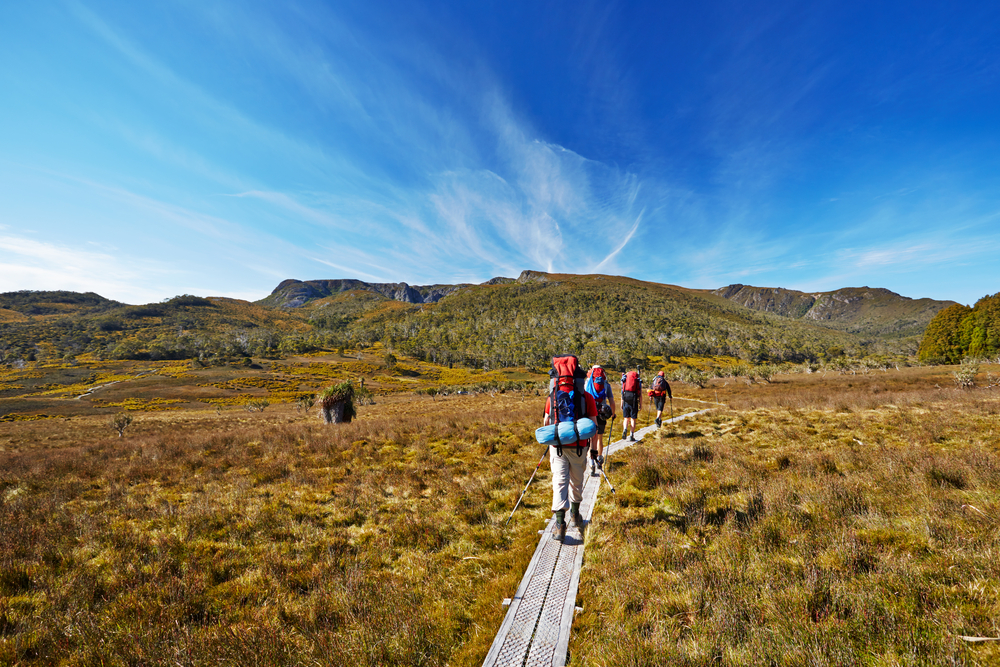
Ask
Learn to ask for what you want. If you meet someone interesting, ask them to teach you. Ask them for an interview. Ask to shadow them for a day or a week. You’ll be surprised at how eager people are to share what they know and teach when someone shows actual interest. Learn to ask questions. Learn to take social risks by putting yourself out there as a learner.
Plan
You have an idea or an interest. Something surprises you on your journey and all of a sudden you have a burning desire to know more. Plan your attack:
- Narrow your field of study to a particular question or topic.
- Compile resources: Look for teachers. Who knows what you need to know? Or who can you interview to learn more? Are there books or videos on the topic you’re interested in?
- Quantify it. How will you demonstrate what you have learned? A research paper, a video project, a photo essay, through art or music, a blog post, a published piece, an interview series, a mini documentary or do you have some other idea?
Produce
Produce a quality piece of academic work that reflects your experiential learning. The whole key to quantifying outside the box learning is to translate it into something that reflects the value of what you learned and how it contributed to your overall educational process.
Perhaps this will be as simple as a traditional research paper, depending on the depth and length of your study this could be as short as three pages or as long as a dissertation. Maybe you’ll produce a video for YouTube, or something grander, like a mini-documentary. Perhaps you’ll do something concrete instead, an art, or community action project and you’ll tell the story through a photo essay, or a series of blog posts. The possibilities are limited only by the resources you have at hand. Get creative. Think outside the box and truly experience your education.
Do You Have Anything to Add to This Resource Page?
We’re actively seeking to grow these resources in an open-source spirit. Please email jenn(at)bootsnall(dot)com with your edits or submissions of new information or materials.
Thank you!
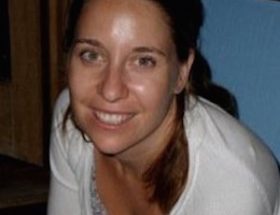 Underwhelmed by career opportunities and options in her semi- rural hometown Fiona rejected the acceptable path of formal education and instead, after graduating High School, Fiona pursued a life of travel and adventure. Fiona knows firsthand that, “Travel has opened up opportunities and possibilities which I never imagined for myself.” Living now with her husband in Tasmania Australia where they foundered and run their own sustainable adventure tourism company Tassie Bound Adventure Tours they still make travel a priority as they schedule in at least one adventure abroad every year. Fiona also writes and speaks and hopes to raise the profile of travel as widely acceptable educational alternative.
Underwhelmed by career opportunities and options in her semi- rural hometown Fiona rejected the acceptable path of formal education and instead, after graduating High School, Fiona pursued a life of travel and adventure. Fiona knows firsthand that, “Travel has opened up opportunities and possibilities which I never imagined for myself.” Living now with her husband in Tasmania Australia where they foundered and run their own sustainable adventure tourism company Tassie Bound Adventure Tours they still make travel a priority as they schedule in at least one adventure abroad every year. Fiona also writes and speaks and hopes to raise the profile of travel as widely acceptable educational alternative.
TK Kurikawa / Shutterstock.com
